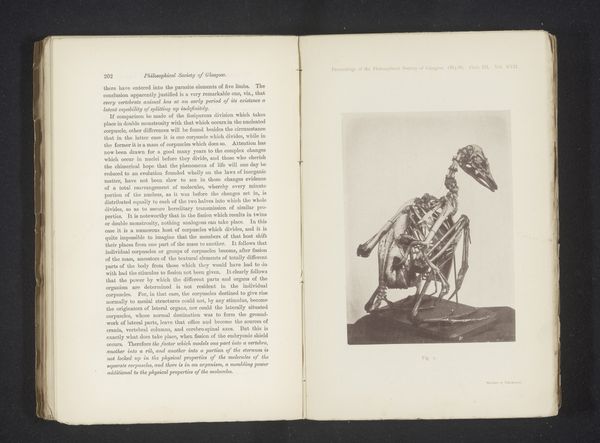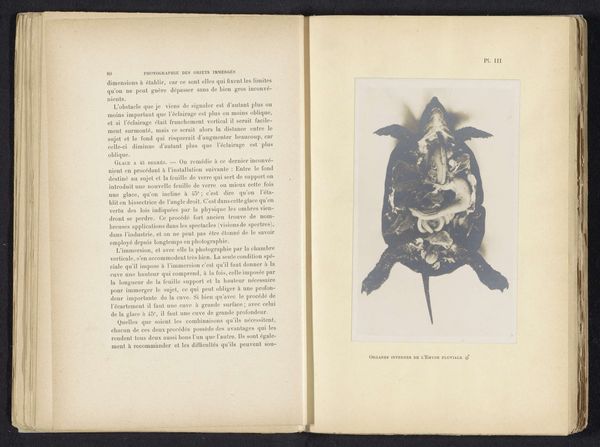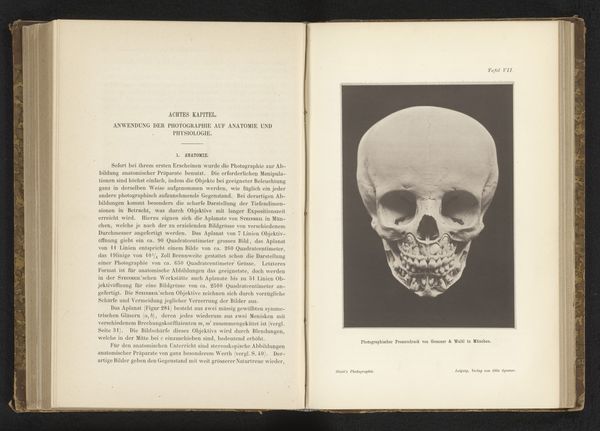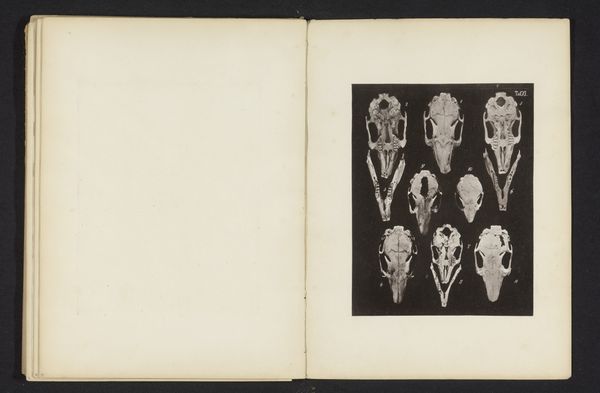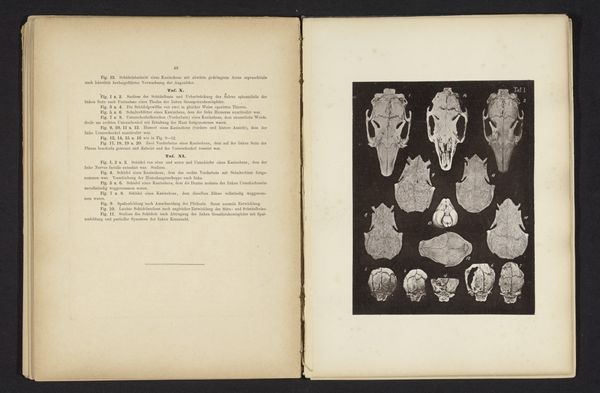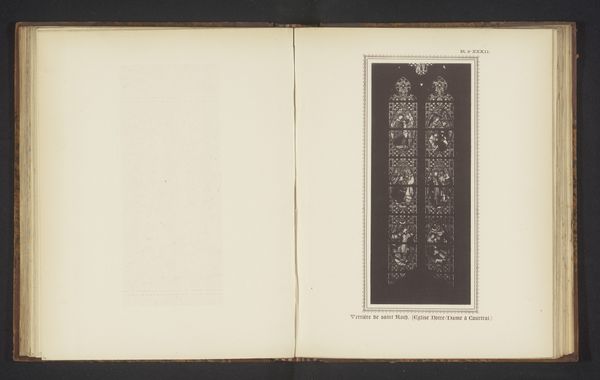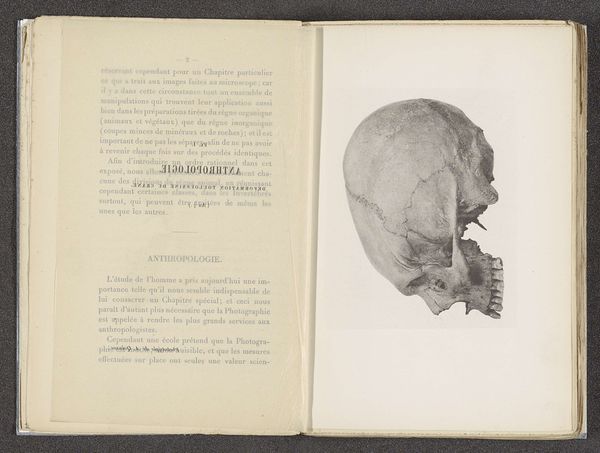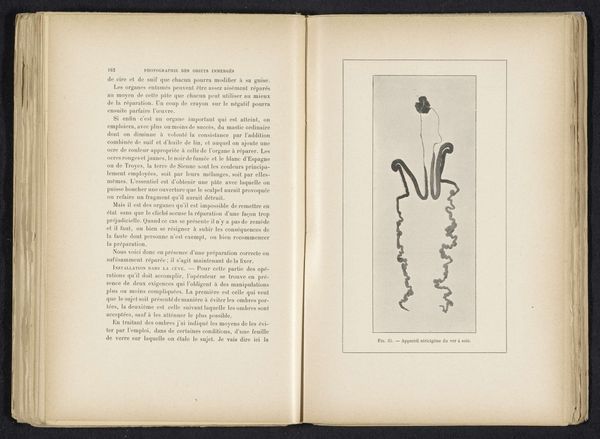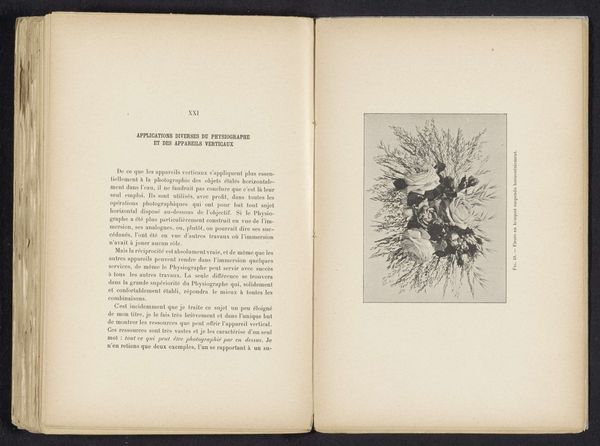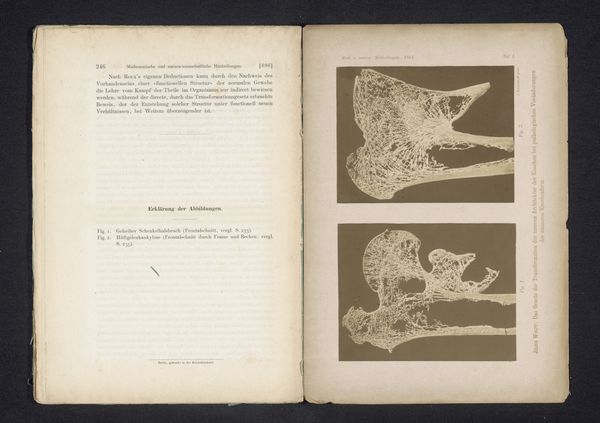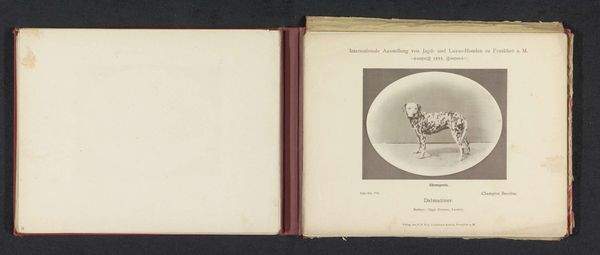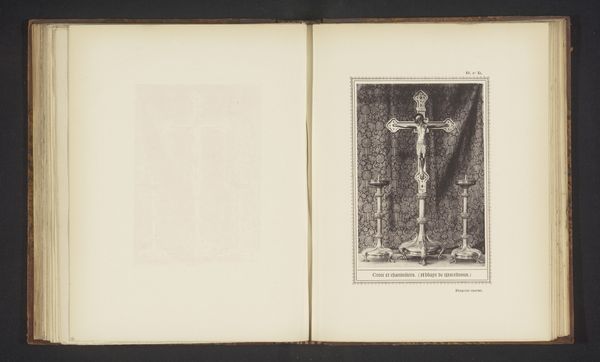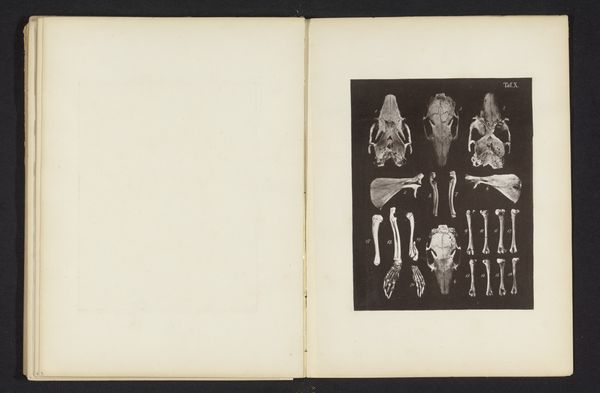
print, photography
#
still-life-photography
# print
#
photography
#
academic-art
#
naturalism
Dimensions: height 155 mm, width 105 mm
Copyright: Rijks Museum: Open Domain
Curator: Here we have “Skelet van een kikker,” a photographic print by Adolphe Louis Donnadieu, created before 1901. The print, presented as a plate within a larger publication, shows the skeleton of a frog against a stark black background. Editor: My immediate reaction is one of stark beauty—the fragility of life laid bare. The skeleton, meticulously arranged, has an almost performative quality; the forelimbs seem to be raised in a gesture of either surrender or performance. Curator: Indeed, there's a strong sense of anatomical precision, characteristic of Naturalism. Notice the clear articulation of each bone, from the skull and vertebrae down to the delicate phalanges. The high contrast serves not just scientific clarity, but also emphasizes a morbid aesthetic. Editor: And, in contrast, what of the implied violence—the scientific eye demands we dispassionately look upon death as knowledge. Dissection then becomes a means to control narratives of life, or to impose the colonial gaze of observation that in other spheres works to oppress populations. Curator: That’s a poignant reading, drawing attention to broader historical contexts, and maybe reads beyond Donnadieu's formal intentions. Within Naturalism, the intent was to render the natural world objectively, scientifically. Editor: But objectivity itself is a construct, right? It has never been neutral and still resonates today in museums where colonial acquisitions are seen neutrally. Every artistic choice—the black background, the stark lighting—imparts a specific mood, thus the picture is presented, mediated through layers of choices reflecting ideology. Curator: Certainly, the stark lighting and arrangement can also provoke philosophical reflection. Editor: And yet, consider where that reflective moment emerges—within systems of institutional collecting. I agree there is inherent value and information to these systems but their very construction must not be assumed as an inevitable or natural means of interpreting data. Curator: A rich encounter—a piece both formally elegant and socially demanding. Editor: It definitely made me contemplate who benefits from such views, whose stories are privileged. Thank you for prompting a reevaluation!
Comments
No comments
Be the first to comment and join the conversation on the ultimate creative platform.

